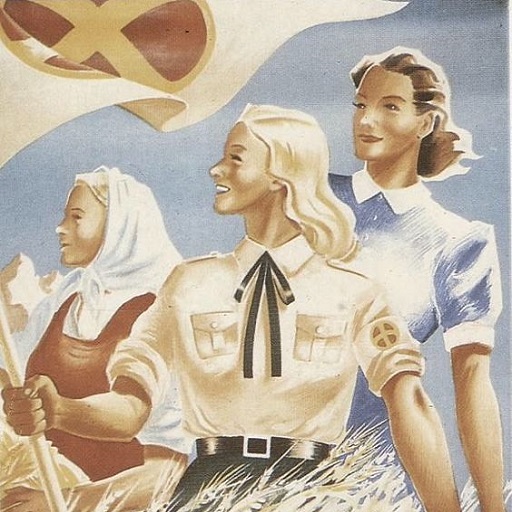De Arktiske Kongedømme
BETA
Version 0.0.4
Welcome to De Arktiske Kongedømme, the alt-history mod meant to give flavor to the nations of the North Atlantic! Take command of 1930s era historical nations, such as Denmark and Norway, or play as an early released Iceland. For a real fun challenge, try your skill with the Kingdom of Faroe, located on the Faroe Islands.
What this mod contains:
A completely new nation, the Kingdom of Faroe
A 1936 start date for Iceland
Edited Denmark and Norway
Custom focus trees for all four nations (still a WIP)
Starting navy and army for Iceland and Faroe Islands
Guarantee that Denmark is gonna do some wacky stuff
Flavor
Custom naming flavor, leaders, and generals for the Kingdom of Faroe
Custom naming flavor, leaders, and generals for Iceland, Denmark, and Norway (WIP)
This mod is in its beta version, and there is still a lot to come. Please let me know of any errors that occur.
Have an idea for the mod or want to help? Message me..
I hope you enjoy the mod!
My other mods:
https://steamcommunity.com/sharedfiles/filedetails/?id=1534289629
p.s. Read the Lore
↓
Historical Background/Lore
Following the end of WWI, Denmark found itself once again in control of territory taken from them in the last century. As the nation had not taken part in the Great War, they found themselves in an economic boom, much like the United States. This prosperity for Denmark did not benefit her colonial holdings though. As the government focused on industrialising the mainland, the people of Iceland and the Faroe Islands found themselves neglected by their Danish rulers. The local economies declined rapidly, and by 1923, the islands faced mass poverty. The arctic islands main industry at this point was fishing, specifically salmon, which could fetch a fair price. In the winter of 1923, the Danish Government passed a new law, preventing the islands from selling their own goods, and instead only being aloud to trade with Denmark. With this bill, the Danes were able to charge very low prices for Salmon and sell it to the rest of the world for massive profit. The people of Iceland and the Faroes were greatly angered by this new trade law, and a state of unrest settled across the islands. In January of 1924, a crowd of 2,000 gathered outside of the Danish legislative building in Tórshavn, Faroe Islands. The demonstrators demanded the trade law be revoked and that Denmark should aid her colonies. Soon, similar protest broke out in Iceland, and the Danes were faced with the possibility of revolt. Within two weeks, Danish forces began arriving in the Faroes, and a few days later in Iceland. On March 5th, 1924, a large crowd of 15,000, mostly students and fishermen, began protesting in Iceland’s capital Reykjavik. The local Danish garrison was called in and confronted the crowd. Tensions began to rise as the protesters started harassing the soldiers, first with words, then with stones and shoving. One thing led to another, and Danish soldiers opened fire on the Icelandic masses.
Norway Greases the Wheels
During this time, the Norwegian Government was keeping a close eye on the developing situation. Afterall, these islands had been Norway’s before losing them to the Danes. When news of the protest turning bloody in Iceland, Norway decided to prepare to intervene. The Norwegians contacted the leaders of the protest in Iceland and the Faroes and promised to come to their aid if independence was declared. War at this point was unavoidable.
A King for the Islands
As tensions reached their climax, the Faroese looked for a leader. Talk of a democratic council were met with mixed emotions due to the popularity of Danish Kings throughout the Island’s history. Historians began looking through danish records to try and find royalty of their own. They eventually discovered that King Christian VIII’s cousin had been born in the Faroes while the family was visiting. Her descendants had moved to Russia, and now resided in the Ukraine area. Under Norwegian diplomatic cover, a group of Faroese met with Kresten Nørgaard IX in Cherkasy. Kresten was sympathetic to the Faroese cause, and agreed to return with the group to the Islands to take control.
The Arctic War (1924-1925)
By now, the islanders had been arming themselves with smuggled Norwegian and British weapons. On June 23rd, Faroese Rebels took control of Tórshavn and declared independence from Denmark. The local forces were quickly defeated, and their weapons used to arm more rebel forces. The following day, a similar event happened in Iceland, except that the battle between Icelandic and Danish forces would go on for months. The Danes were prepared for these uprisings, and began transporting troops to retake the Faroe Islands and reinforce Iceland. Unluckily for those Danish troops they would never reach their destination. As Danish ships left their ports, Norway declared war on Denmark. The Norwegian Navy quickly intercepted the convoys, sinking or capturing all but 3 vessels, who managed to make it back to the Danish coast. The war would shift to a formal war between Norway and Denmark for the next 9 months. In April, a combined force of Icelandic, Faroese, and Norwegian soldiers crushed the last bastion of Danish troops in Iceland. The following week, Norway landed in Greenland, cutting off the last arctic port for Denmark. A month later, under heavy U.S. and British pressure, the Danish signed a peace treaty with Norway, Iceland and the now Kingdom of Faroe. The treaty recognised both Iceland and the Kingdom of Faroe as independent nations, and gave Norway control of any other arctic holdings of Denmark. The Danish Government was in turmoil, and the nation would face a harsh decade of unrest at home.



